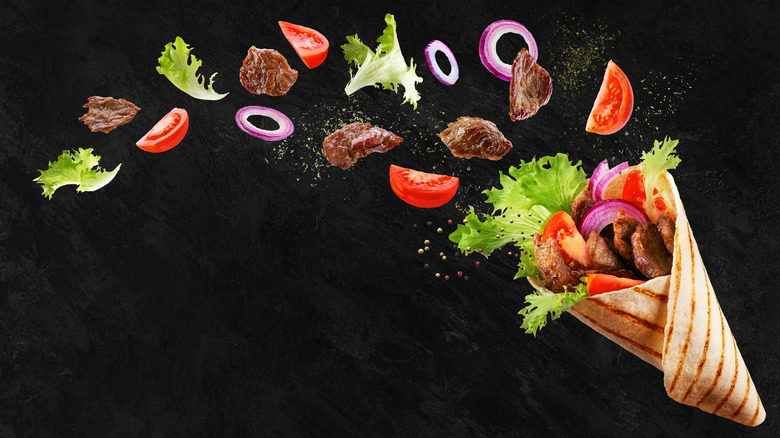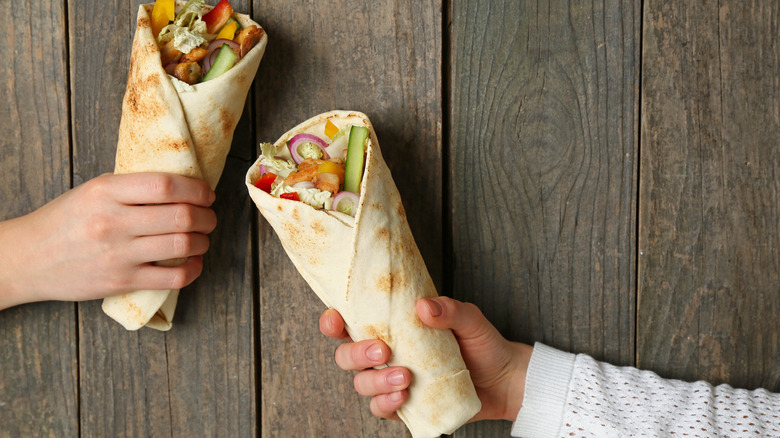Why Germany Is Called The 'Kebab Capital Of The World'
If you didn't know much about Germany's food preferences, you could be forgiven for thinking that the country's most popular takeout meal would either be a bratwurst and a beer, or a brat swimming in curry sauce (currywurst), with a side of French fries or fat chips. And while both meals are held in high regard by German diners, there is another option that most are likely to pick when they are on the go.
The Guardian says Germany's love affair with döner kebabs (also called kebaps, per Thrillist) can be traced back to the country's post-World War II reconstruction effort — a time when Turkish nationals had been invited to work in West Germany and be a part of the country's economic miracle or wirtschaftswunder. While tens of thousands of Turkish people answered the economic call to arms, many of them found themselves unemployed when the economy went from boom to bust. It was then that unemployed Turks turned to selling kebabs to make ends meet.
And while the idea for serving meat sliced up on a skewer is said to have appeared in Istanbul during the 1960s, per I Am Expat, it didn't actually take off until Turks in Germany made it into a meal. Kebabs are so popular in Germany, Culture Trip says many believe the döner kebab could have been invented there, giving the country reason to be called the kebab capital of the world.
Döner kebabs got their start in Germany in the 1970s
While two men have claimed credit for bringing the kebab to Germany in the 1970s — Kadir Nurman and Mehmet Aygun — The Association of Turkish Döner Producers in Europe (ATDID) contend that credit should rightly go to Nurman, who first opened a stall in '72, a stone's throw from Berlin's Bahnhof Zoo (via BBC Travel). Instead of serving the traditional grilled meat with rice, Nurman offered a kebab and salad that were all tossed together into pita bread, making the döner into a meal that could be eaten on the go.
Additionally, while the original sandwich only used beef, other fillings like chicken, lamb, and turkey eventually became options too. Kebab shop owner Evren Demircan tells the BBC that other variations, including the iskender kebab, made with "thinly cut grilled lamb, tomato sauce, pita bread, melted sheep butter and yogurt," and the adana kebab, which features "hand-minced meat kebab mounted on a wide iron skewer" and koefte, a parsley-and-mint herbed meatball also took off.
The ATDID estimates there are about 60 thousand people employed selling kebabs across Germany today, and the country accounts for 2.4 billion of the 3.5 billion euros in kebab sales. Given those figures, it's difficult to see the country giving up its crown as the kebab capital of the world anytime soon.

